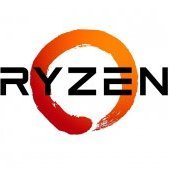Leaderboard
Popular Content
Showing content with the highest reputation on 08/14/19 in all areas
-
Oh dear, don't use Syncthing directly on the mount. It's a rather long explanation as to why it doesn't work but just trust me, it won't work.2 points
-
***Update*** : Apologies, it seems like there was an update to the Unraid forums which removed the carriage returns in my code blocks. This was causing people to get errors when typing commands verbatim. I've fixed the code blocks below and all should be Plexing perfectly now Y =========== Granted this has been covered in a few other posts but I just wanted to have it with a little bit of layout and structure. Special thanks to [mention=9167]Hoopster[/mention] whose post(s) I took this from. What is Plex Hardware Acceleration? When streaming media from Plex, a few things are happening. Plex will check against the device trying to play the media: Media is stored in a compatible file container Media is encoded in a compatible bitrate Media is encoded with compatible codecs Media is a compatible resolution Bandwith is sufficient If all of the above is met, Plex will Direct Play or send the media directly to the client without being changed. This is great in most cases as there will be very little if any overhead on your CPU. This should be okay in most cases, but you may be accessing Plex remotely or on a device that is having difficulty with the source media. You could either manually convert each file or get Plex to transcode the file on the fly into another format to be played. A simple example: Your source file is stored in 1080p. You're away from home and you have a crappy internet connection. Playing the file in 1080p is taking up too much bandwith so to get a better experience you can watch your media in glorious 240p without stuttering / buffering on your little mobile device by getting Plex to transcode the file first. This is because a 240p file will require considerably less bandwith compared to a 1080p file. The issue is that depending on which format your transcoding from and to, this can absolutely pin all your CPU cores at 100% which means you're gonna have a bad time. Fortunately Intel CPUs have a little thing called Quick Sync which is their native hardware encoding and decoding core. This can dramatically reduce the CPU overhead required for transcoding and Plex can leverage this using their Hardware Acceleration feature. How Do I Know If I'm Transcoding? You're able to see how media is being served by playing a first something on a device. Log into Plex and go to Settings > Status > Now Playing As you can see this file is being direct played, so there's no transcoding happening. If you see (throttled) it's a good sign. It just means is that your Plex Media Server is able to perform the transcode faster than is necessary. To initiate some transcoding, go to where your media is playing. Click on Settings > Quality > Show All > Choose a Quality that isn't the Default one If you head back to the Now Playing section in Plex you will see that the stream is now being Transcoded. I have Quick Sync enabled hence the "(hw)" which stands for, you guessed it, Hardware. "(hw)" will not be shown if Quick Sync isn't being used in transcoding. PreRequisites 1. A Plex Pass - If you require Plex Hardware Acceleration Test to see if your system is capable before buying a Plex Pass. 2. Intel CPU that has Quick Sync Capability - Search for your CPU using Intel ARK 3. Compatible Motherboard You will need to enable iGPU on your motherboard BIOS In some cases this may require you to have the HDMI output plugged in and connected to a monitor in order for it to be active. If you find that this is the case on your setup you can buy a dummy HDMI doo-dad that tricks your unRAID box into thinking that something is plugged in. Some machines like the HP MicroServer Gen8 have iLO / IPMI which allows the server to be monitored / managed remotely. Unfortunately this means that the server has 2 GPUs and ALL GPU output from the server passed through the ancient Matrox GPU. So as far as any OS is concerned even though the Intel CPU supports Quick Sync, the Matrox one doesn't. =/ you'd have better luck using the new unRAID Nvidia Plugin. Check Your Setup If your config meets all of the above requirements, give these commands a shot, you should know straight away if you can use Hardware Acceleration. Login to your unRAID box using the GUI and open a terminal window. Or SSH into your box if that's your thing. Type: cd /dev/dri ls If you see an output like the one above your unRAID box has its Quick Sync enabled. The two items were interested in specifically are card0 and renderD128. If you can't see it not to worry type this: modprobe i915 There should be no return or errors in the output. Now again run: cd /dev/dri ls You should see the expected items ie. card0 and renderD128 Give your Container Access Lastly we need to give our container access to the Quick Sync device. I am going to passively aggressively mention that they are indeed called containers and not dockers. Dockers are manufacturers of boots and pants company and have nothing to do with virtualization or software development, yet. Okay rant over. We need to do this because the Docker host and its underlying containers don't have access to anything on unRAID unless you give it to them. This is done via Paths, Ports, Variables, Labels or in this case Devices. We want to provide our Plex container with access to one of the devices on our unRAID box. We need to change the relevant permissions on our Quick Sync Device which we do by typing into the terminal window: chmod -R 777 /dev/dri Once that's done Head over to the Docker Tab, click on the your Plex container. Scroll to the bottom click on Add another Path, Port, Variable Select Device from the drop down Enter the following: Name: /dev/dri Value: /dev/dri Click Save followed by Apply. Log Back into Plex and navigate to Settings > Transcoder. Click on the button to SHOW ADVANCED Enable "Use hardware acceleration where available". You can now do the same test we did above by playing a stream, changing it's Quality to something that isn't its original format and Checking the Now Playing section to see if Hardware Acceleration is enabled. If you see "(hw)" congrats! You're using Quick Sync and Hardware acceleration [emoji4] Persist your config On Reboot unRAID will not run those commands again unless we put it in our go file. So when ready type into terminal: nano /boot/config/go Add the following lines to the bottom of the go file modprobe i915 chmod -R 777 /dev/dri Press Ctrl X, followed by Y to save your go file. And you should be golden!1 point
-
To some people? A great deal. To me? Not really. To you? Apparently not, but why rain on somebody else's parade?1 point
-
My backup server has no Parity drive. The Check button then does a Read check of all the array drives looking for errors.1 point
-
Hmm a good question, bit of a story on this. so firstly i was completely unaware that sparklyballs had previously created a docker image of urbackup, so when squid pm'd me linking me to the issues with it i was surprised to say the least!. However i can confirm from my own personal experience so far i have seen none of the issues reported by sparklyballs, now onto why this might be... So it's possible that urbackup dev's have made their app a little more docker friendly and fixed the issue, its also possible that its docker base os related, its also possible its a design difference, sparklyballs tended to use volume maps whereas i tend to use softlinks., maybe its cos im more awesome than sparklyballs [emoji846] In short i don't actually know why the issue doesn't occur but for now im happy it doesn't :-). BTW i am not 100% sure you need to run this privileged, i am NOT running it privileged, but my cache drive is formatted with XFS not BTRFS so that maybe why i can get away with it, you can certainly try running it non privileged and see how you get on (let me know).1 point
-
Just and update. Support came back with a request for the Flash GUID, I sent it to them and within 10 minutes of the second email I had my server operational with my new Flash drive. They answered the first email within 3 hours (I didnt see it for an hour) and the second one in 10 minutes. Yet again a great experience with the Unraid team! It really is a 5* service and exceptionally good value.1 point
-
Sorry I missed this comment earlier. I'm not sure what to make of this. UTT performs tests of the Unraid Disk Tunables by running dozens or hundreds of non-correcting parity checks. But if you don't have parity disks... then how in the world are you even running UTT? I don't know if you can trust any of the results - I don't even know what the results mean anymore. If you don't have parity disks, then you shouldn't be able to check parity, and you shouldn't be able to use this tool to check parity check speeds with different tunables configured. That also might explain why negative md_sync_thresh values were responding well on your machine. Is there even a [CHECK] Parity button on your Unraid Main screen?1 point
-
Wow. I've said it before and I'll say it again, every server is unique, some in very surprising ways. I scanned through your results, and for repeated tests I see fairly large variances of up to +/- 2.3 MB/s, so keep that in mind when comparing results. The Long test, with a 10 minute duration for each test, should provide more accurate results. Regarding consuming 0 MB, it's actually not 0. I'm rounding to the nearest MB, so anything under 0.5 MB would round down to 0 MB. Here's the formula and your actual result: (( ( md_num_stripes * (2640 + (4096 * sbNumDisks)) ) / 1048576 )) = RAM Consumed (In Megabytes) With your values: (( ( 16 * (2640 + (4096 * 7)) ) / 1048576 )) = 0.477783203 MB *NOTE: I've just added a new function to UTT v4.1 to show memory used in KB when it rounds down to 0 MB. Regarding the negative md_sync_thresh values, I had to double-check the code to see if UTT was really setting negative values, and it is. While UTT is setting negative md_sync_thresh values, I'm not sure if Unraid is overriding the values when they are below a certain threshold. While I know how to read the currently 'configured' value, I don't know how to query the currently 'set' value. Does anyone know how to do this? I did go into the Unraid Disk settings, and manually set a negative value and applied it, and Unraid saved it! So best I can tell, the UTT script is setting negative md_sync_thresh values, Unraid is accepting them, and your server is responding better with them. Perhaps @limetech can share some insight. Paul1 point
-
You are correct that 1 automated transfer per year is allowed. Any additional transfers have to be handled by an email to Limetech explaining why but they are normally accommodating to such requests - it just adds a little delay to the process.1 point
-
If by server you mean the Unraid OS, it wouldn't. If by server you mean the actual hardware, yes that is exactly what happened. The hardware disconnected.1 point
-
Version 4.1 Beta 2 Xtra Long Test completed... XtraLongSyncTestReport_2019_08_13_0625.txt1 point
-
Great instruction !! I used it for EMBY and Hadrware Transcoding also works. Thank you1 point
-
No idea why your approach is not working, but one tried and tested method of achieving what you seem to want is to install the ‘screen’ pack via the Nerd Tools plugin and then start a ‘screen’ session from the CLI and run the command from there.1 point
-
This can not be resolved here on the the forum, you must email support. [email protected]1 point
-
1 point
-
1 point
-
Sweden by any chance? I have no idea why, but it might be down. Can't connect there from a desktop app. Edit: and now I can1 point
-
It would be nice if some of the reactions could only be available in The Lounge or other general discussion areas, in order to keep the help-based areas streamlined. XenForo has that capability, hopefully this forum can at least do the same.1 point
-
1 point
-
The drive has to 32GB or less. There is no real reason to be concerned about what particular drive might be the absolute best. Any name brand drive (preferably USB2 as there are occasional compatibility problems with USB3 drives) will work fine. Don't worry about speed as the drive is basically used only during the boot process. (This is the reason why most Unraid flash drives will last for years.) Even if the drive should fail, LimeTech makes changing to a new drive a virtually automatic process. See Here: https://wiki.unraid.net/UnRAID_6/Changing_The_Flash_Device You should always have a backup copy of your flash drive. You can do that by Main >>> Boot Device (click on 'Flash') >>> Flash Device Settings (Click on 'FLASH BACKUP'). Having a current backup can have you up and running from the unlikely event of of a flash drive failure in a few minutes.1 point
-
Do the following to let docker rebuild the networks rm /var/lib/docker/network/files/local-kv.db /etc/rc.d/rc.docker restart1 point



















